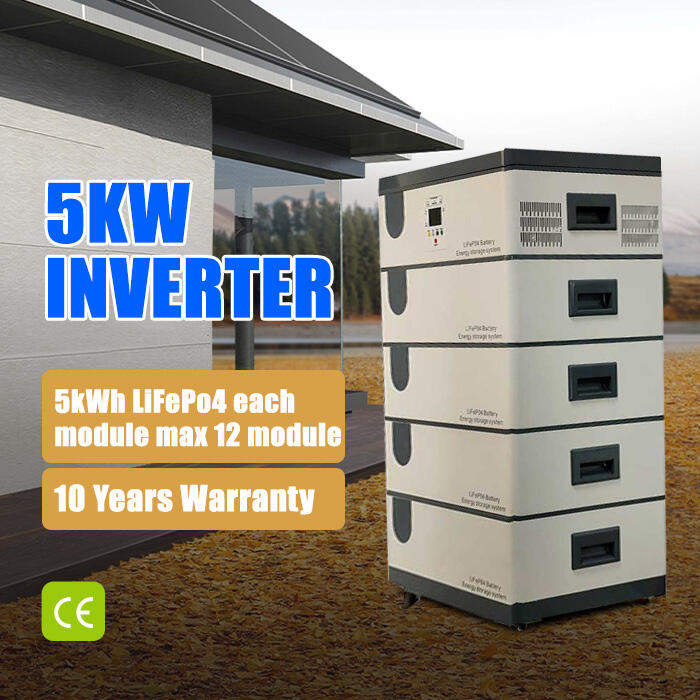Previously, storing solar energy was quite luxurious, but now we have to put it to good use. Even without the sun, one is not afraid. The electricity stored during the day can still be used at night or on cloudy days. The most critical component here is the battery, which is the core of the solar energy storage system. There are significant differences between different batteries, such as how long they can last, whether they are safe, and what functions they can support for solar energy systems. By selecting the right battery, the practicality of solar energy systems can be fully utilized, whether for home use or small commercial use.
LiFePO4 batteries, which stands for Lithium Iron Phosphate, are the most opted for solar energy storage batteries. One of their most incredible features is the high cycle count. Many will cycle 6000 times or more and still be functional. With daily use, they can last for years. They are also the safest forms of lithium batteries. They are used in households and pose no danger of overheating, combustion or fires. This is a major advantage.
One of the best features of LiFePO4 batteries is their scalability. You can start with smaller 300Wh battery packs and add more packs until you reach 10000Wh systems or larger systems to provide power to an entire house. It is also able to function under varying climates. It can be used and relied under extreme heat and extreme cold.

Lead-Acid batteries have been used for solar energy storage for a while, especially in off grid systems. Compared to LiFePO4 batteries, Lead-Acid batteries have a more affordable initial cost, making it the best option for people with limited funds. Lead-Acid batteries also have their disadvantages, though. For example, their cycle life is significantly shorter, ranging about 500-1500 cycles, which is why it is important to use them in situations where the regular long-term cost is low.
When evaluating storage options, larger and heavier devices may pose a challenge when working with confined spaces. Research has demonstrated that lead-acid batteries incur higher costs in unsupervised environments. Gas venting over stored lead-acid batteries and electrolyte level monitoring can result in dangerous scenarios. Nonetheless, flooded lead-acid batteries may be useful in very small solar setups with minimal costs. However, in most solar energy storage applications, lead-acid batteries are markedly inferior when compared to LiFePO4 batteries for solar energy storage.
Lithium polymer batteries are another option for solar energy storage and can take a range of forms with different LiPo batteries being very custom. For solar setups with unique designs and those that are spatially challenged, being able to create a battery that is extremely thin and small can be very useful and a greater advantage of these batteries is their energized density enabling them to store large amounts of energy in a small area.
To ensure safety, lithium polymer batteries utilize solid or gel electrolytes rather than liquid ones. This considerably decreases the risk of leaks, securing them for home use. However, compared to LiFePO4 batteries, lithium polymer batteries have a shorter cycle life, typically between 3,000 and 5,000 cycles. They also have a higher sensitivity to heat, requiring cooler environments to function properly. For solar setups where space is a significant concern, lithium polymer batteries may be a viable option, but they are less rugged than LiFePO4.
When solar energy storage is needed, the first step is the identification of the storage battery type. However, selecting a battery that is compatible to your needs is paramount. Start with analyzing your energy consumption levels. For instance, if your home is large with several appliances, you will require a high capacity battery.However, if you are simply powering a few small devices, the 300Wh portable battery will suffice.
Next, think about the climate in the area you live in. If you live in a region with scorching summers, a LiFePO4 battery is better suited for your needs, as it performs better in hot weather. If you live in a cold area, check to see if the battery can work in extreme cold—some LiFePO4 batteries can be used in freezing temperatures.
Also consider the hassle of maintenance. If you don’t want the trouble that comes with a lead-acid battery of checking the electrolyte levels, a LiFePO4 or lithium polymer battery is better. And look for the warranty. Look for batteries with a 10-year warranty, as that indicates that the manufacturer has confidence in the battery.
There is increasing interest in product solar energy to battery storage, and the battery you pick will determine when you can access power from your solar system. For most users, LiFePO4 batteries work best as they are the most durable, safest, and most versatile when it comes scalability. While lead-acid batteries are cheaper, they require more upkeep and ultimately don’t last as long. Lithium polymer batteries, while less durable than LiFePO4, are good for small spaces.
Choosing a solar energy storage battery depends on your energy needs, your location, and your desired level of maintenance. Ideal batteries allow you to save more of the solar energy you generate, reduce your electricity expenses, and achieve greater energy independence.